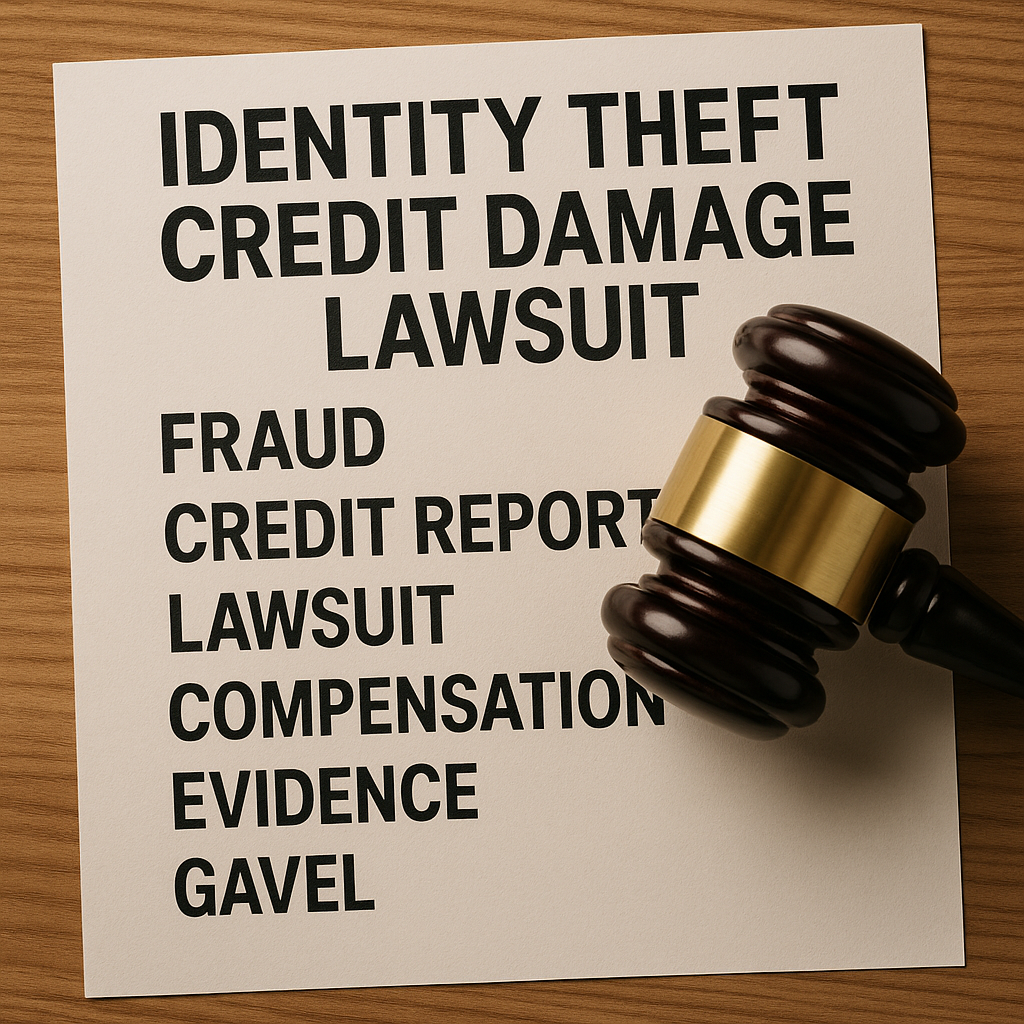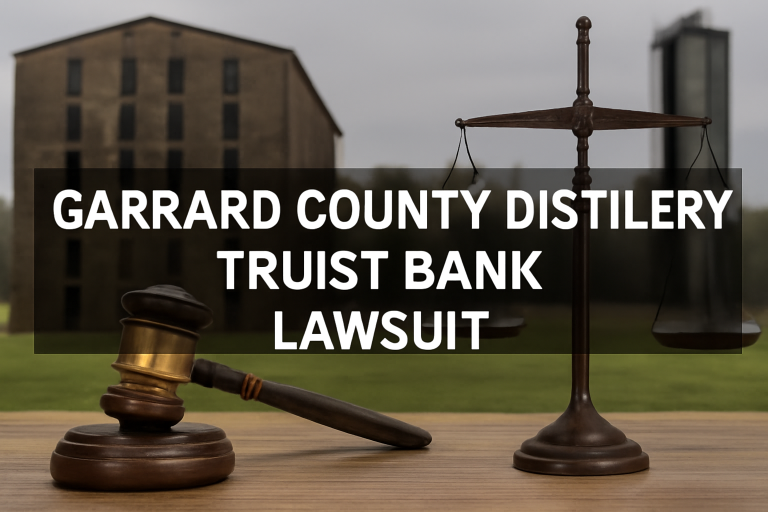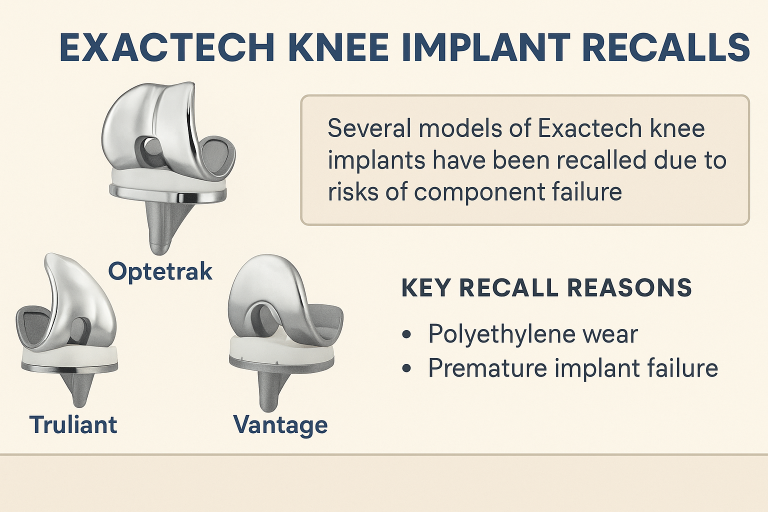An identity theft credit damage lawsuit offers a clear path when fraud harms your credit report. Identity theft can devastate your finances in days. Criminals can open accounts, max out credit, and vanish. You must act fast to stop more damage. You also need steps to dispute false entries, restore your credit, and recover losses. Laws give rights to fight back through legal action. This article outlines that process. It explains how to build your case, submit claims, and seek compensation in court. You will learn your rights under credit laws, follow proven steps to fix errors and win relief. So, you will gain guidance on evidence, timing, settlement, and trial. You will feel confident to protect your credit and pursue justice.
What is an identity theft credit damage lawsuit?
An identity theft credit damage lawsuit targets those who caused credit harm. It seeks correction of credit records and compensation. You file a case against credit bureaus, lenders, or debt collectors. Laws like the Fair Credit Reporting Act protect your rights. You claim that fraud led to false entries and serious harm. Court orders can force correction. Awards may include damages. A lawsuit can stop further harm and hold parties responsible. You regain control of your financial reputation through this legal route.
Why people bring these lawsuits
Victims bring an identity theft credit damage lawsuit when credit agencies or creditors ignore disputes. They face loan rejections or higher rates. Identity fraud can block job offers or housing approvals. Unresolved errors can trigger collections calls. These harms push victims into court. Lawsuits give a formal path to fix credit. They also offer compensation for real losses. You do not have to accept errors that ruin your financial standing. A lawsuit can force stronger action and legal accountability.
Recent enforcement and legal trends
Regulators now target faulty dispute handling more often. Agencies enforce credit laws aggressively. They sue bureaus over failed investigations of fraud disputes. These actions signal stronger consumer protections. Courts review practices and award damages in unfair cases. Recent rulings emphasize timely and accurate corrections. Such trends boost credibility of an identity theft credit damage lawsuit. You gain leverage when agencies already flag wrongdoing. You stand on firmer footing pursuing your case.
Common legal bases in these lawsuits
You ground an identity theft credit damage lawsuit in proven laws. The Fair Credit Reporting Act allows claims for inaccuracies and failed fixes. The Fair Debt Collection Practices Act protects against wrongful collections. State law may add negligence or privacy violations. These combined claims reinforce your case. You claim both process failure and harm. Courts recognize layered legal bases as stronger. Legal overlap increases chances of remedy and compensation.
Who you can sue
You may sue those causing your credit harm in an identity theft credit damage lawsuit. Credit bureaus that never fix fraudulent accounts qualify. Lenders that post false debt and ignore disputes are responsible. Debt collectors pursuing fraud debts may face liability. Companies causing data breaches that enabled fraud can also be defendant. You must target parties with legal duty to report accurately. Only then will courts hold them to account. A focused lawsuit improves chances for relief.
How to build your case — step by step
You build an identity theft credit damage lawsuit by gathering proof and following legal process. Report the fraud immediately to federal authorities. File reports with identity theft hotlines and police. Alert credit bureaus and freeze your files. Collect credit reports, dispute letters, and your notifications. Send dispute notices in writing to courts, creditors, and bureaus. Track all losses, such as loan denials or extra costs. Document collection letters tied to fraudulent accounts. Talk to a lawyer who handles credit law cases. A lawyer directs legal claims and calculates possible damages. You must act quickly and document every action. That creates a strong court record.
Evidence that strengthens claims
Evidence makes your identity theft credit damage lawsuit credible. Police reports show you reported the crime. Inaccurate entries on credit reports show the harm. Dispute correspondence proves that you tried to fix mistakes. Collection letters show attempts to collect bad debts. Financial records show your real losses—rejected applications, higher interest, or extra fees. Strong documentation boosts your claim’s validity. This proof lets courts see your clear effort and real damage. It also pressures opposing parties to settle.
Statute of limitations and timing
Time affects your identity theft credit damage lawsuit. Federal law usually gives two years from discovery to sue. Some cases allow five years from violation. States may extend or shorten deadlines. You must learn your state’s specific time limit. Delays can destroy your claim. Acting fast preserves your right. Your lawyer can verify deadlines. Starting early secures your legal position.
Types of damages you can seek
Your identity theft credit damage lawsuit may win more than correction. You may recover actual damages for financial loss. Losses include higher interest or services denied. You may claim statutory damages if law allows set amounts. Moreover, you may win punitive damages if defendant acted recklessly. You may also recover attorney fees and court costs. You must show both harm and fault. A detailed case can yield full compensation for your financial and emotional toll.
Typical defenses the other side uses
Defendants often defend a identity theft credit damage lawsuit with common claims. They may allege they followed all required legal steps. Also, they may claim errors originated with another party and argue you filed the lawsuit too late. They may assert they conducted a reasonable investigation. Knowing potential defenses helps you and your lawyer plan counterstrategies. Strong proof and documentation minimize the power of these defenses.
Settlement versus trial
You may resolve an identity theft credit damage lawsuit through settlement or trial. Settlement means faster results and guaranteed payment. Court trial can yield higher damages but takes more time. Settlement avoids stress and legal costs. Trial risks uncertain outcomes but may reward more. You and your lawyer must weigh risk, time, and evidence quality. The best path depends on case strength and your personal priorities.
How courts handle credit report correction claims
Courts reviewing an identity theft credit damage lawsuit examine process and proof. They require that you properly disputed errors. They check whether investigations meet legal standards. Judges want proof of harm and timelines showing failure to correct. Courts weigh your documentary records heavily. Well-organized records can tip judgments in your favor. Judges also award statutory damages if law requires.
A basic timeline you can expect
An identity theft credit damage lawsuit follows a consistent schedule. You report the fraud first, freeze credit and alert bureaus in a few days. You then dispute errors and gather documents. Bureaus must respond within thirty days. If they fail, your lawyer may file a lawsuit soon after. You wait months while legal proceedings progress. Settlement may close the case early. A trial may take longer. Knowing the timeline helps you plan.
Practical letter templates and filings
Letters help your identity theft credit damage lawsuit succeed. You can adapt standard legal templates for disputes, customize each letter to reference specific fraud entries. You mail each letter certified, so you prove delivery and keep records of dates, recipients, and follow-ups. This evidence shows court you took proper dispute steps. Courts expect clear, serious, and timely communication.
Quick remedies and likely outcomes
| Problem | Immediate action | Possible legal remedy | Typical result |
|---|---|---|---|
| Fraudulent account on credit report | Dispute with bureaus; contact creditor | FCRA claim; negligence | Account removed or corrected |
| Debt collector sues you over fraud debt | Send identity-theft affidavit; defend | FDCPA claim; declaratory relief | Case dismissed or judgment vacated |
| Data breach caused identity theft | File complaints; check breach notices | Class action or individual suit | Settlement or corrective orders |
| Bureaus ignore disputes | Demand reinvestigation; keep records | FCRA statutory damages | Correction and possible damages |
| Denied loan due to fraud mark | Collect denial letter; document harm | Actual damages claim | Compensation for out-of-pocket loss |
How regulators can help you
Regulators can boost your identity theft credit damage lawsuit. Agencies enforce credit reporting laws and may penalize violators. Filing complaints creates pressure on companies to respond. State attorneys general can intervene in fraud or privacy cases. Regulators’ involvement may lead to company policy changes. It can also add leverage when negotiating settlements. Including regulator referrals in your lawsuit strengthens your claims.
When to consider class action or mass litigation
A class action may suit large-scale fraud harming many people. A mass data breach that spreads errors may justify this approach. Joining a class saves time and legal fees. It also raises public attention. However, payouts may be smaller. You may lose control over settlement details. You must weigh focus on individual recovery against collective action.
Costs and fee structures for lawyers
Lawyers help your identity theft credit damage lawsuit in different ways. Many offer contingency fees. They take a percentage only if you win. Some charge hourly rates or fixed fees. You and your lawyer must agree on costs up front. You must understand who pays expenses like filing fees. Clear fee terms let you make informed decisions.
Tips to prevent future damage
You can avoid future harm after pursuing an identity theft credit damage lawsuit. You check your credit reports regularly. Moreover, you lock accounts when you spot dangers. You use strong passwords and two-factor authentication. You shred sensitive documents, set alerts on account activity and stay alert to suspicious charges or mail. Prevention helps protect your financial future.
Frequently asked questions (FAQs)
Q: Can I sue if thieves used only my name?
Yes. Even if only your name is used, false entries harming your credit allow a claim. Evidence of harm makes your case strong.
Q: How long does a credit bureau have to investigate a dispute?
They usually have 30 days. Sometimes they get an extension. Acting early makes your case stronger.
Q: Can I get punitive damages?
Yes. Only if you show willful or malicious actions. These cases are rare but possible.
Q: What is the FCRA deadline to sue?
You usually have two years from when you discover the violation. Some cases allow up to five years.
Q: Should I contact collection agencies about fraud debts?
Send a formal identity-theft affidavit. Use your legal rights to stop calls. Keep proofs of contact.
Conclusion
An identity theft credit damage lawsuit can restore your credit score and recover your finances. You can sue credit bureaus, lenders, or collectors that ignore fraud. You fix your reports using clear disputes and solid documentation. Courts enforce your rights under credit laws. You may win true compensation, correction, and justice. Speed matters. You must report fraud, freeze credit, and begin disputes immediately, you must track losses and build a proof-based case. You may choose settlement or trial based on strength and goals. A lawyer helps you navigate every step. Taking action empowers you to protect your credit and your future.




